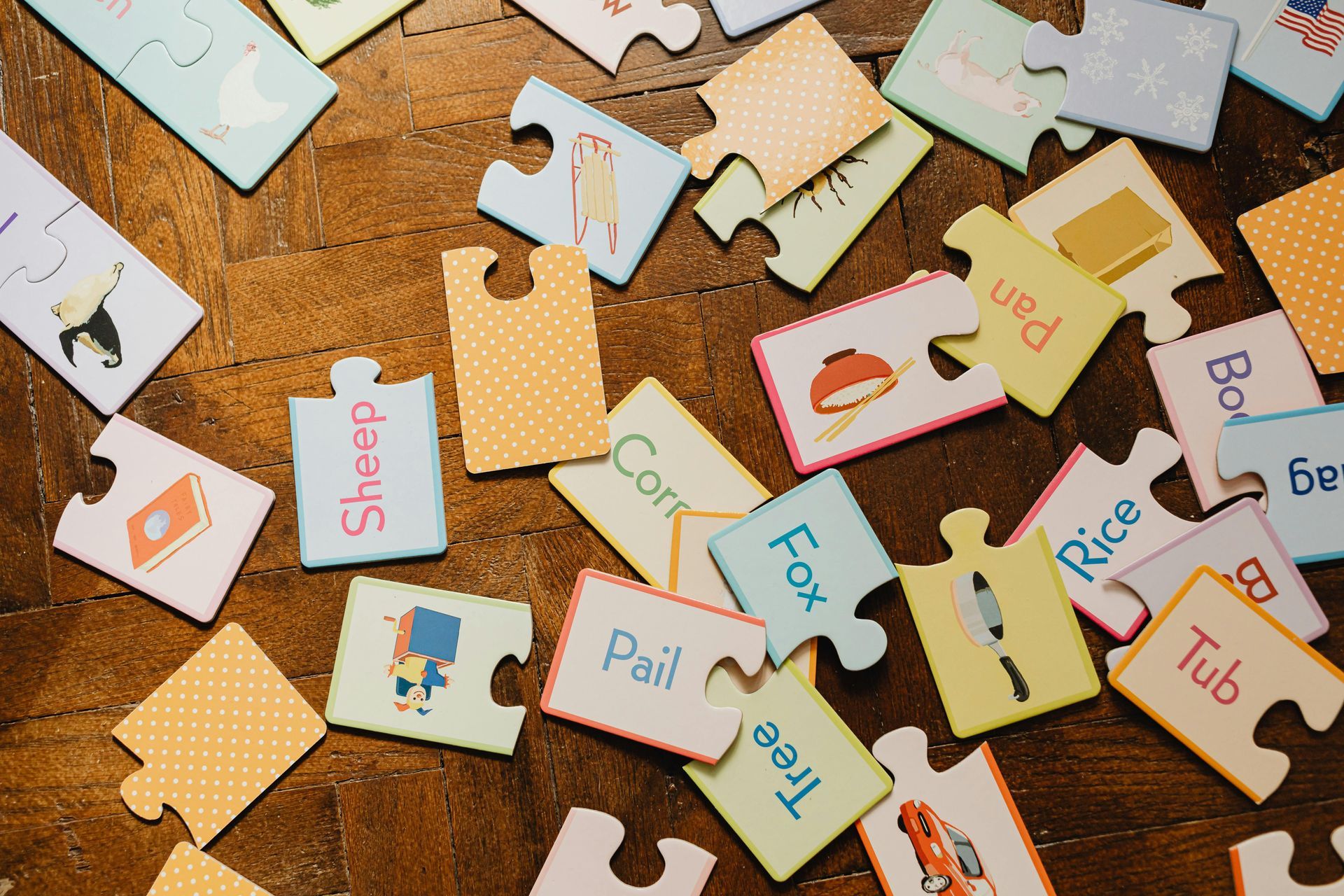Accommodations in Education
Accommodations in Education
Many classroom teachers and homeschool parents have the opinion that all students should be treated the same. While this sounds great in theory, it is not practical. Children are different. Strengths and weaknesses can vary greatly among siblings, not to mention a classroom full of children from numerous different backgrounds.
I remember when I learned this. I had always tried to treat my students the same way, which is fine in the areas of kindness and respect for all. When teaching reading, students were assigned a reading group according to their ability to read. Doing this showed me how some students would be able to read other text books and some would need a lot of help in those other areas. There was no way to treat them all the same. What was right and fair for one student was not necessarily best for another. Because I was teaching in a Christian school at the time, I was able to let the class know that God created everyone with different strengths and weaknesses, so what was fair for one might not be fair for another. My goal in class was to do whatever I could to ensure that everyone would learn. Children need a variety of methods in teaching for everyone to have the opportunity to be successful. I had some students who were poor readers, but excelled at learning when we were doing a hands-on project. Some students hated hands-on projects. They were much happier just reading the text or writing a paper.
It is important to look at each student as an individual, and to make sure that a wide range of assignments are given to play into the strengths of everyone whenever possible. Realistically, this is not always possible when a teacher has 30 students in a class. For example, the effort should be made to include reading, writing, hands-on projects or art, and maybe computers and possibly some math when teaching a Social Studies unit. Most students will be good at and hopefully enjoy some aspect of learning in this unit.
Another way to help a student who struggles in reading is to read a test to them. If they are taking a math test and there are word problems, read those questions to them. The purpose of the test is to see if they can calculate the problem, not read the words. The same is true with science. Tests or answering questions at the end of a chapter is intended to assess their science knowledge, not to see how many of the words they can read. This is true of most subjects. They should receive a reading grade only for reading, not other subjects. While they are learning to read, it is important that they DO NOT fall behind in learning general knowledge subjects. When working with a dyslexic student, you might be surprised at their ability in math and science.
Another problem might be spelling. During my in-person tutoring days, I was able to get most teachers to accept the spelling words that we were working on along with the reading program. At the end of the week, I would give them the test during a tutoring session, score it, and make a copy of the test for the student to bring in to the teacher. This worked great.
If you are homeschooling your child, you will be able to adjust your teaching to your child’s learning style. If you are homeschooling multiple children, it won’t take you long to know who can be successful with independent work and who will need much more individualized attention. Remember, each child is unique. One size never fits all.
Here are a few of my favorite examples:
1. If a child has trouble with labeling geography maps in Social Studies because they can’t figure out which part is land and which part is water, help them out by lightly shading in the water with a blue colored pencil. I had a student one year who could fill in the entire map correctly if I made this one simple accommodation.
2. In 5th grade, many students learn where each state is located. They are asked to fill out a map of the United States with the name of each state. Either make this a matching test, so it’s NOT a spelling test, or better yet (and more fun), I had a very large felt map that students could label with the state names printed on felt strips. If they were learning state capitals, there was also a set of capitals on felt strips. All they needed to do was place them on the map. I also used this for a game in class.
3. In math, teach them how to build a model of something to scale. Again, just because reading is a struggle doesn’t mean that numbers are a struggle also.
4. Work art and creativity into otherwise “dry” subjects. During the time that I taught junior high, we took over the responsibility for the fall carnival. Whatever we were learning about in Social Studies/History at the time became the theme for that year. My students built and painted carnival game booths, dressed in character, wrote a creative story, and worked the event. By the time the carnival was over, they all knew more than they wanted about that time period or event.
5. Use cooking to teach measurements. Teaspoons, tablespoons, cups, pints, quarts, and gallons as well as weight measurements such as grams, ounces, pounds, etc. can be learned in the kitchen.
6. Reader’s Theatre is a great way for reluctant readers to participate in class. Give the strugglers the characters that have a very limited number of parts.
These are just a few ideas. Lastly, remember that students learn in many different ways. The goal is to find what works best for your student while you keep working on reading fluency.

Beginning Sight Words
I to he
can me look
for some many
have and with
his this where
from says done
the go is
of what good
goes any should
we you little
they help who
Mr. could again
see do she
said put come
your would was
a my does
want has Mrs.
as been there
like are how
hear play walk
Note to Parents:
Remember when teaching sight words to your child, it’s best to put them on 3”x 5” cards and start with 5 at a time. When your child is comfortable with the first 5, add in 2 or 3 more at a time.
I would probably look at the list with a reading book in hand. Start with the sight words that they will need to be able to read fluently in their reader. Since different readers have different sight words, this is the best way to get started.
You can start by having them just read the word. When they are proficient with remembering the word, you can also have them learn to spell it. That is the goal: reading and spelling each sight word correctly.
Important Kindergarten Skills to Practice During the Summer and Beyond
A lot of kindergarten work is oral. There are only a few things on this list that requires writing. Here are some ideas to help you get started:
1. High Frequency and Sight Words: (Put them on flash cards if you can)
a. List 1: I, am, see, a, can, we, the, in, and, go, to, like, said, you, is, it, here, come, up, look, at, me, on, this, my
b. List 2: she, was, he, went, by, out, big, little, yes, with, no, not, going, down, where, are, they, from, have, for, run, his, will, one, of
2. Practice identifying upper and lowercase letters and their sound, including the digraphs ch, ck, sh, th, wh.
3. Practice writing their name legibly.
4. If your child knows his/her sounds, they may practice sounding out CVC (consonant, vowel, consonant) words. To do this say each sound and then put them together to say the word. Here is a list of sample words to start with: mat, bam, map, Sam, fat, tap, cab, pig, rim, ban, tag, gap, nag, bin, am, pin, rat, lip, at, hit, cat, rat, sat, fig, dog, jam, lid, dim, bog, dip, dig, kid, cob, cub, gum, us, wax, quit, wag, ox, cut, yum, path, neck, chin, rock, back, rush, chop
5. Work on Rhyming Words. Examples Set One: mat, bat, sat, cat, etc. Set Two: jump, bump, lump, etc. Set Three: sing, ring, bring, etc. Set Four: run, bun, fun, etc. (Rhyming words are strictly by ending sound and not the spelling such as fun and done.
6. Math Skills:
a. Practice counting from 1 to 100 by 1’s and practice counting by 10’s to 100.
b. Practice writing numbers from 1 to 20.
c. Practice adding numbers reaching 5, such as 1+2=3, 2+3=5, etc.
d. Practice recognizing flat shapes: triangle, square, rectangle, circle, hexagon.
e. Practice 3-D shapes: sphere, cone, cylinder, prism, cube.
7. Besides these academics, working on small motor skills is also critical for kindergarten children. Suggestions include:
a. Practice cutting with scissors – straight lines and curves
b. Coloring – Staying in the lines
c. Playdough – pinching and shaping
d. Any other activity that requires using fingers with small things
Spending 10 to 15 minutes each day practicing some of these things will really help your child excel.

